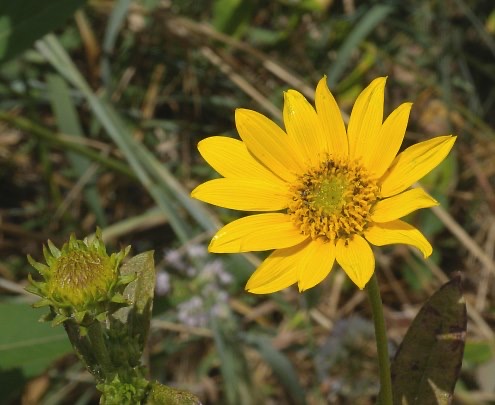
Western sunflower (Helianthus occidentalis) is actually native to eastern and central North America, not western North America (USDA hardiness zones 4-8). It is one of the shortest of the many sunflowers found in the U.S. You have seen this Midwest native growing in glades, prairies, dry meadows, fields and rocky open woodlands. It grows equally well in my east Tennessee garden.
Western sunflower is also sometimes commonly called naked stemmed sunflower because of the almost total absence of leaves from the flowering stems. Large, long-stalked, ovate to oblong-lanceolate, the basal leaves (some up to 8 inches long) form a 4-8 inches tall foliage clump. Its 2-inch-wide flowers with orange-yellow rays and yellow disks appear on stiff, almost naked (leafless), flower stems that typically rise to a height of 2-3 feet (less frequently to 4 feet) tall. It blooms from late summer into fall.
This ground cover sunflower is best grown in average, dry to medium, well-drained soils and in full sun. It is not fussy and tolerates a wide range of soils, including poor sandy soils. However, avoid planting in organic poor clay soils. It tolerates moderate drought. Over time it spreads aggressively by creeping rhizomes to form large colonies. Plants should be divided every 3-4 years to control spread and to maintain overall vigor.
No serious insect or disease problems trouble this sunflower and is tolerant of deer. You may need to stake taller plants, particularly plants not in full day sun.
Plant naturalizes readily in areas where it is planted. A good plant for holding dry soils and preventing erosion. Use flowers in fresh cut arrangements.
Uses: Sunny borders, wild or native plant gardens, cottage gardens.

 Posted in
Posted in 
